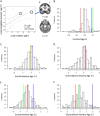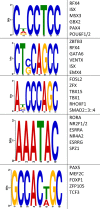A multi-dimensional characterization of anxiety in monozygotic twin pairs reveals susceptibility loci in humans
- PMID: 29225348
- PMCID: PMC5802687
- DOI: 10.1038/s41398-017-0047-9
A multi-dimensional characterization of anxiety in monozygotic twin pairs reveals susceptibility loci in humans
Abstract
The etiology of individual differences in human anxiousness is complex and includes contributions from genetic, epigenetic (i.e., DNA methylation) and environmental factors. Past genomic approaches have been limited in their ability to detect human anxiety-related differences in these factors. To overcome these limitations, we employed both a multi-dimensional characterization method, to select monozygotic twin pairs discordant for anxiety, and whole genome DNA methylation sequencing. This approach revealed 230 anxiety-related differentially methylated loci that were annotated to 183 genes, including several known stress-related genes such as NAV1, IGF2, GNAS, and CRTC1. As an initial validation of these findings, we tested the significance of an overlap of these data with anxiety-related differentially methylated loci that we previously reported from a key neural circuit of anxiety (i.e., the central nucleus of the amygdala) in young monkeys and found a significant overlap (P-value < 0.05) of anxiety-related differentially methylated genes, including GNAS, SYN3, and JAG2. Finally, sequence motif predictions of all the human differentially methylated regions indicated an enrichment of five transcription factor binding motifs, suggesting that DNA methylation may regulate gene expression by mediating transcription factor binding of these transcripts. Together, these data demonstrate environmentally sensitive factors that may underlie the development of human anxiety.
Conflict of interest statement
The authors declare that they have no competing financial interests.
Figures



References
Publication types
MeSH terms
Substances
Grants and funding
LinkOut - more resources
Full Text Sources
Other Literature Sources
Medical
Research Materials
Miscellaneous

